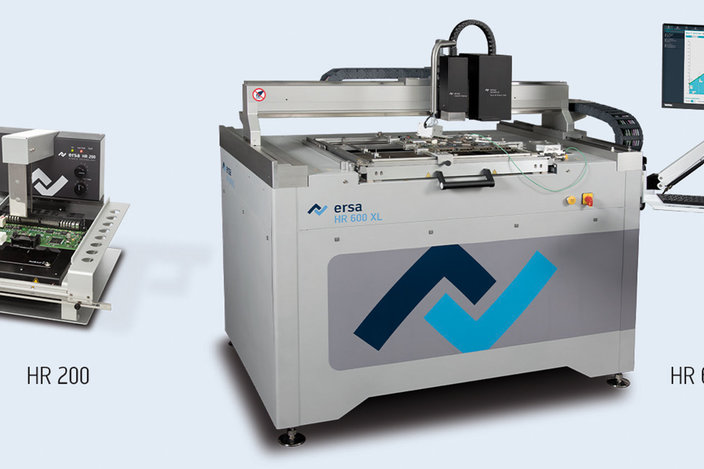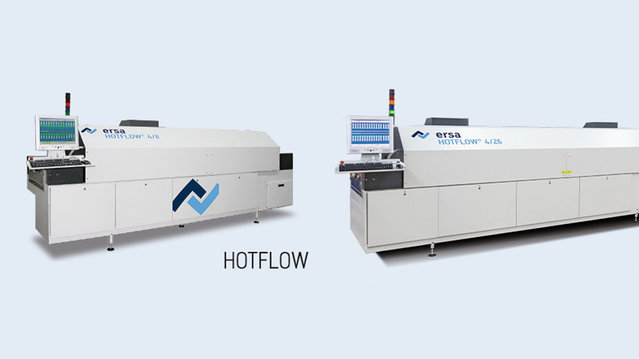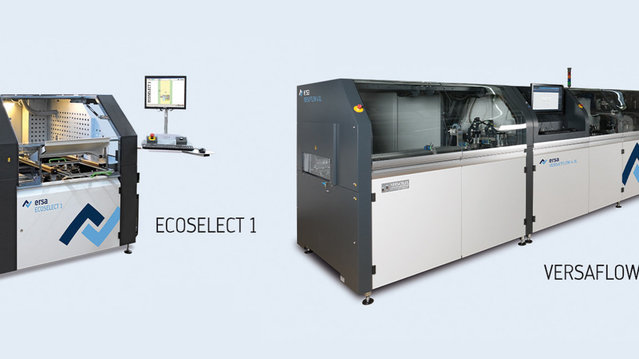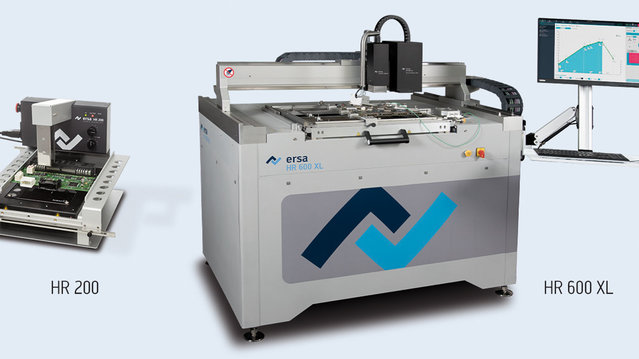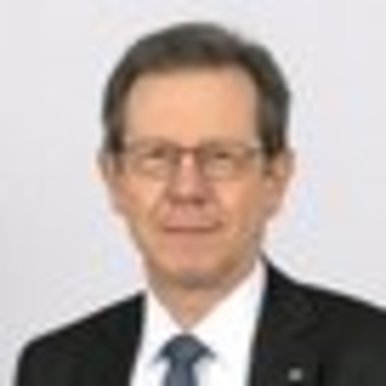The future of electronics production is modular - individual system solutions Technical article
The opportunities for European electronics manufacturing lie in the individual, demand-oriented production of customer-specific products - produced under efficient cost structures. Standardized high-tech modules - integrated into a wide variety of system concepts and scalable from flagship to entry-level systems - guarantee the highest level of quality and competitiveness.
With modern manufacturing concepts such as lean production, island production and flexible production lines, manufacturers have effective tools to successfully face the competition. An important part of these concepts is the production equipment, which must also be able to be flexibly integrated into production concepts. This presents manufacturers of plants and systems with the challenge of using standard modules to build systems that guarantee standard processes, but can be produced in a highly flexible and cost-effective manner and guarantee low operating costs.
Attractive market segments in Europe continue to be industry and the automotive industry, which have been tapping into new and interesting future markets for some time due to current developments in the areas of digitalization, electromobility with charging infrastructure and new mobile communications standards such as 5G. As electromobility continues to gain momentum, electric drives are also becoming increasingly important in other areas of everyday life: whether cars, scooters, e-bikes, tools or outdoor equipment - less and less can be done without batteries. These market segments require individual systems for practically all tasks that require a secure connection of all conceivable components and assemblies.
Process-efficient solutions for electronics production
The drive technology for all these applications is a broad playing field for power electronics of all kinds. Multilayers with up to four inner layers of 400 µm copper each are available to safely conduct high power and currents on the PCBs. 5G applications require process-efficient solutions for electronics production in order to reliably connect components and PCBs of different shapes and sizes. With selective soldering, the PCB formats are up to 610 x 3,000 mm. For wave soldering, the requirements for PCB formats are max. 610 x 850 mm, for reflow soldering they are 610 x 1,200 mm.
Energy-efficient, resource-saving: reflow soldering with Ersa
Today, convection reflow soldering is the preferred connection technology in the surface mounting technology of electronic assemblies. In combination with component development, it alone is capable of ensuring the inexorably growing integration density in mobile devices, among other things. However, a transformation from THT components to surface mount technology is also increasingly taking place in traditional areas such as power electronics. With its reflow soldering systems, Ersa has been offering the industry standard for economical, energy-efficient reflow soldering for years - the EXOS 10/26 vacuum reflow soldering system with lubricant-free roller transport in the vacuum module, which was presented at productronica in the fall, caused a sensation.
From rework to IoT
Due to the high manufacturing costs of the aforementioned assemblies, the topic of reworking SMDs is also becoming increasingly interesting for manufacturers. In this sector, the spectrum of components ranges from tiny chips (01005) to BGA components with an edge length of 120 x 120 mm and approx. 9,000 connection balls. The IoT, on the other hand, places completely different demands on electronic assemblies, which in direct comparison with the above requirements can be classified as simple. Ten-layer multilayers for mobile IoT applications and sensors the size of a thumbnail are now available as standard in thicknesses of 0.5 mm with a line space of 100 µm. In this case, the soldering technology should be seen as secondary; primarily, solder paste printing places very high demands on print quality and inspection.
Standard modules for a wide range of applications
Driven by the specific requirements of the types of electronic assemblies described, the spectrum of solder joints in the SMT and THT area ranges from undemanding to very demanding. The reason for this is the large difference in the heat capacities of the individual solder joints. In the THT sector, for example, the spectrum ranges from connectors with a 1.27 mm pitch to solderable terminals for cable cross-sections of 95 mm² in power electronics. In this context, many manufacturers have expressed a desire for standard mass soldering processes for SMT and THT. These processes are qualified and established, and production personnel are familiar with them. This results in a demand on the manufacturers of the production systems to solve these different applications with standard modules in their systems. Ersa has implemented this complex task in an exemplary manner.
The same modules such as fluxers, preheating cassettes, soldering units or convection modules are used in all types of mass soldering systems. The combination and expandability of individual machine series based on these standard modules enables the configuration of reflow, wave and selective soldering systems as well as reflow and rework soldering systems with a very wide range of applications. The high degree of flexibility in system construction provides a flexible solution for every application. Ersa's many years of experience guarantee effective, economical operation with high system availability.
To the lecture
The presentation uses examples to illustrate how production facilities can be adapted to a wide range of requirements by standardizing system assemblies and combining them intelligently in the form of modules. The manufacturers of production plants and systems are thus making an advance contribution to providing domestic industry with production equipment that allows them to react flexibly to market and customer requirements while still being able to increase their competitiveness.
Speaker
Jürgen Friedrich studied mechanical engineering and electronics at Aalen University of Applied Sciences. He has been with Ersa since 1998 and is responsible for application technology. In close cooperation with customers and scientific institutes, he develops solutions for demanding joining tasks, supervises research projects and provides process support in questions of soft soldering technology. Training courses on soldering technology as well as presentations and seminars at international events round off his field of activity. Since 2014, Jürgen Friedrich has headed the certified AVLE course center for training in soldering technology. Friedrich is a certified trainer for IPC-A-610 and a member of various working groups on lead-free soldering technology, DKE K 682 and various DVS and VDMA committees and bodies.
